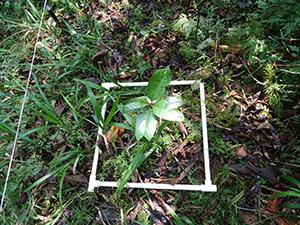Ricardo Romero Gonzalez
Design the first management plan for secondary Tropical Montane Cloud Forests (TMCF) in Mexico. Implementing a continuous cover forestry management.

Tropical Montane Cloud Forests (TMCF) is a high priority ecosystem for conservation at a global scale. The main causes of TMCF loss and degradation are conversion to agricultural or pasture lands for raising cattle, as well as illegal tree harvesting. In Mexico, only 28% of the original TMCF cover remained by 2002; of this, 52.4% corresponded to degraded or secondary forests.

The project will be developed in the cooperative “Las Cañadas” a ranch with 306 has in central Veracruz, Mexico. In 1950, a cattle grazing farm was established over a total of 306 ha originally covered by TMCF. The cooperative was established in 1995 and the farm was registered as a conservation easement with the following zoning: Conservation (36.4 ha), Buffer (56.08 ha), Recovery (113.14 ha) and Multiple Use (101.12 ha). Only 30 ha were assigned to cattle breeding and the rest of the land was excluded for TMCF recovery and sustainable management. For this purpose, 50,000 native tree were planted over 60 ha. At present, the secondary TMCF supports commercial trees of harvestable size over an area of 160 ha. These secondary forests are located within the areas designated as Recovery and Multiple Use.
Our goal is to design the first integrative management plan for secondary TMCF in Mexico. An appropriate management scheme for secondary TMCF will set an example, enabling an opportunity for sustainable management of this ecosystem. Implementing a continuous cover forestry management.
We plan to contribute to the sustainable management of TMCF by: (1) developing a pilot experience for TMCF timber harvesting, (2) sustainable timber harvesting of TMCF, which will work as an incentive to maintain forest cover in the study area, (3) provision of training for sustainable management of secondary TMCF, and (4) the production of recommendations to be targeted towards different stakeholders, local communities, technicians and federal programs in order to support TMCF management. This last point will be achieved with the establishment of permanent plots for long term monitoring (periodic tree-growth measurements, allometric analysis, and regeneration dynamics).